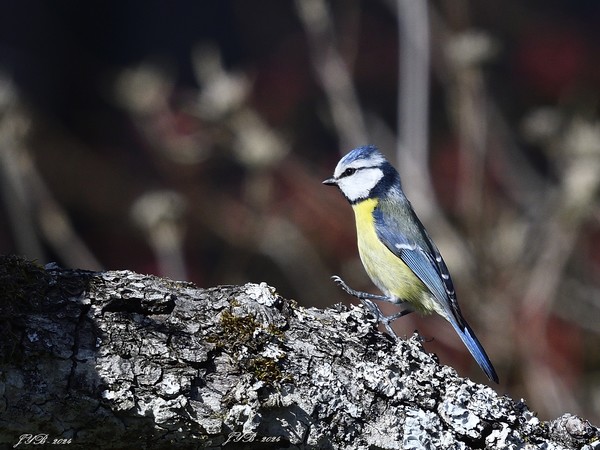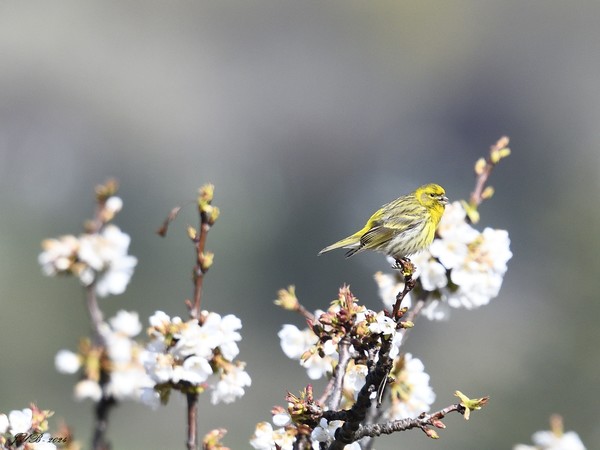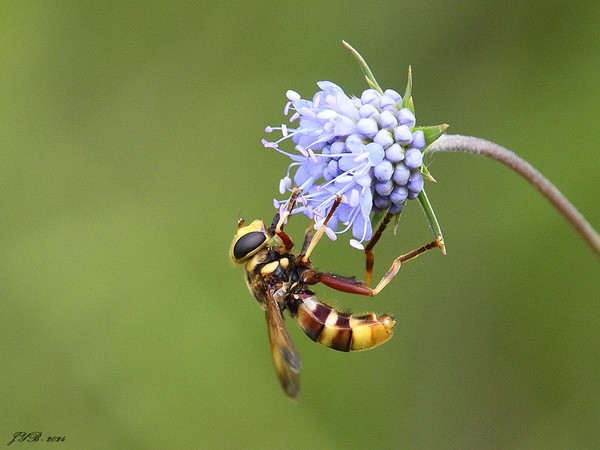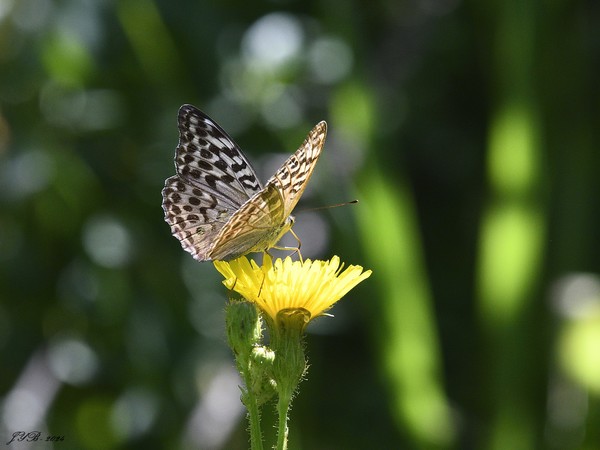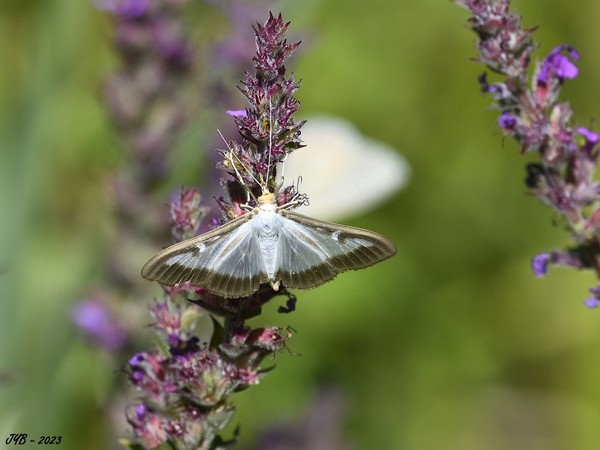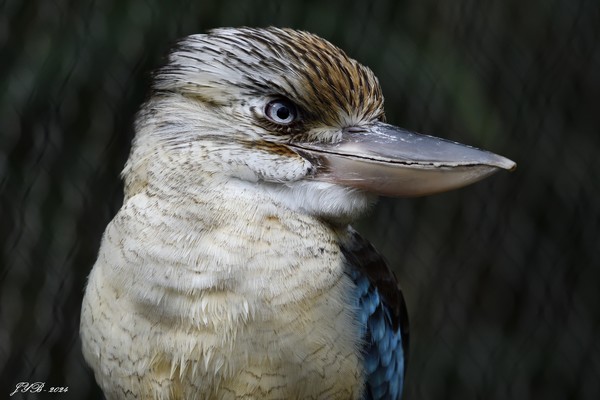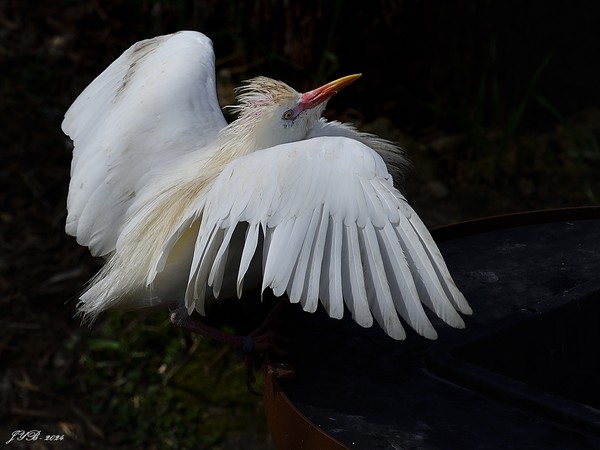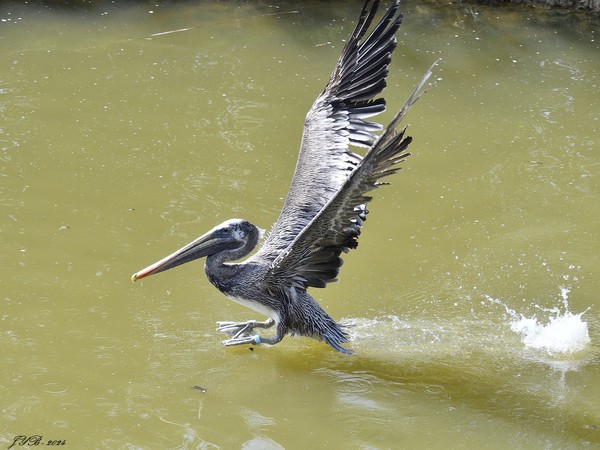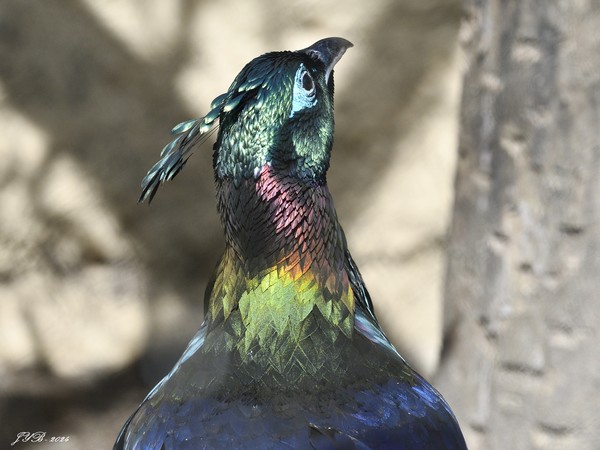LES OISEAUX DU FAUCIGNY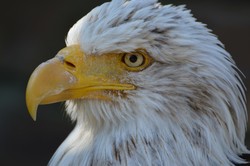
Signer mon livre d'or Faire connaître mon blog Me contacter par mail Flux RSS
ThèmesBirds Himalaya Monal Oiseaux Oiseaux Pakistan Oiseaux Inde afrique aime animal animaux ara australie bande
Rubriques
>> Toutes les rubriques <<
· ANATIDÉS - CANARD -ANATIDAE-DUCKS (157)
· ARRENGA - Whistling Thrush (9)
· BARBUS, CABEZON, BARBET, (50)
· BOUVREUIL - BULLFINCH (38)
· BRÈVES - PITTA - (17)
· BRUANTS - BUNTING (75)
· BULBULS (27)
· CAILLES, COLINS, PERDRIX (21)
· CALAO - HORNBILL (53)
· CANARI - GÉNÉRALITÉS (8)
· CANARI DE COULEUR - CANARY (257)
· CANARI DE POSTURE - TYPE CANARY (37)
· CARDINAUX - CARDINAL (41)
· CASOAR-EMEU-EMU-CASSOWARY-PIPING GUAN (31)
· CASSIQUE - QUISCALE (20)
· CHARDONNERET, GOLDFINCH (79)
· CIGOGNES - STORKS (31)
· COLIBRIS - HUMMINGBIRD (34)
· COLOMBIDÉS -PIGEON - DOVE (140)
· CONCOURS - EXPOSITIONS-SHOWS (200)
· CORBEAU - CORNEILLE - CROW - RAVEN (28)
· COSSYPHE - ROBIN CHAT (10)
· COTINGAS (38)
· COUCOU, MALCOHA-CUCKOO-MALKOHA (44)
· COUP DE GUEULE !!!! (45)
· DÉCOUVERTE (59)
· DENDROCYGNES - WHISTLING DUCK (15)
· DIVERS - MISCELLANEOUS (39)
· ESTRILDIDÉS -ESTRILDID (241)
· ÉTOURNEAUX, CHOUCADORS-STARLING (116)
· EURYLAIMES - BROADBILL (11)
· EXOTIQUES - EXOTIC BIRDS (223)
· EXPO OISEAUX DU FAUCIGNY - BIRDS SHOW (44)
· FAISANS - PHEASANT (69)
· FICHES "TECHNIQUES" (11)
· FLAMANT- FLAMINGO- (42)
· GALLINACÉS - POULES - DINDES - (33)
· GARRULAXE - SIBIA - LAUGHINGTHRUSH (27)
· GEAIS, TEMIA, JAY, TREEPIE (56)
· GESTION D'ÉLEVAGE - BREEDING (17)
· GRIVE - THRUSH (24)
· GROS-BEC, DUR-BEC-GROSBEAK (25)
· GRUES - CRANE (21)
· GUÊPIERS - BEE EATER (43)
· HÉRON-AIGRETTE-CRABIER- (76)
· HIRONDELLES MARTINETS-SWALLOW (49)
· HYBRIDE - HYBRID (6)
· IBIS (30)
· INSECTES (5)
· LÉGISLATION - LAW (41)
· LES OISEAUX DU FAUCIGNY CLUB (85)
· LIMICOLES - SHOREBIRDS - WADERS (33)
· LORIOT - ORIOLE - (15)
· MAINATE - MYNA (17)
· MALADIES OISEAUX - BIRD DISEASES (53)
· MANCHOTS - PENGUIN (33)
· MARTIN PÊCHEUR- KINGFISHER (46)
· MATÉRIEL CAGES VOLIERES -AVIARIES (19)
· MÉLIPHAGES - HONEYEATER (38)
· MERLE - BLACKBIRD- (25)
· MÉSANGES - RÉMIZ - TIT (174)
· MOINEAUX - NIVEROLLES-SPARROWS (49)
· MOTMOT (20)
· MUSCICAPIDÉS - MUSCICAPIDAE (17)
· OISEAU EUROPÉEN - HUPPE - HOOPOE (7)
· OISEAU EUROPÉEN - AUTRES (122)
· OISEAU EUROPÉEN - BEC CROISÉ-CROSSBILL (18)
· OISEAU EUROPÉEN - FAUVETTE- WARBLER (25)
· OISEAU EUROPÉEN - LINOTTES - LINNET (21)
· OISEAU EUROPÉEN - PIE GRIÈCHE-SHRIKE (24)
· OISEAU EUROPÉEN - ROUGEGORGE - ROBIN (30)
· OISEAU EUROPÉEN - ROUGEQUEUE-REDSTART (21)
· OISEAU EUROPÉEN -SIZERIN - REDPOLL (3)
· OISEAUX DE LAC - CYGNES - GRÈBES -SWAN (90)
· OISEAUX DE MER-SEABIRDS (39)
· OISEAUX RARES - OISEAUX MIGRATEURS (18)
· ORGANISTES - EUPHONIA (26)
· PAONS - PEACOCKS (21)
· PAPES AMERICAINS-AMERICAN BUNTING (18)
· PAPILLONS - BUTTERFLY (17)
· PARCS ORNITHOLOGIQUES - BIRD PARK (8)
· PARULINES - PARULIDAE (34)
· PELICAN (20)
· PERRUCHE À COLLIER- ROSE-RINGED PARAKEET (11)
· PICS - WOODPECKER - (75)
· PIES - PIROLLES - MAGPIE - (28)
· PINSONS - CHAFFINCH-BRAMBLING (60)
· PINTADE - GUINEAFOWL (10)
· PODARGES - FROGMOUTH (9)
· PROTECTION DE LA FAUNE SAUVAGE (52)
· PSITTACIDÉS - AGAPORNIS - LOVEBIRDS (17)
· PSITTACIDÉS - AMAZONES-AMAZONS (43)
· PSITTACIDÉS - ARAS ET PERROQUETS-MACAW (105)
· PSITTACIDÉS - CACATOÈS-COCKATOO (73)
· PSITTACIDÉS - CAÏQUE - PYRILIA (10)
· PSITTACIDÉS - CONURES (65)
· PSITTACIDÉS - DIVERS - miscellaneous (17)
· PSITTACIDÉS - JACO- GREY PARROT (14)
· PSITTACIDÉS - LORIS - LORIES (64)
· PSITTACIDÉS - PERRUCHE ONDULÉE - BUDGIES (13)
· PSITTACIDÉS - PERRUCHES-PARAKEET (86)
· PSITTACIDÉS - PIONE - PIONUS (9)
· PSITTACIDÉS - POICEPHALUS (19)
· PSITTACIDÉS - PSITTACIDAE - (25)
· PSITTACIDÉS - TOUI - FORPUS (10)
· PSITTACIDÉS- VAZA - VASA PARROT (16)
· RAPACE NOCTURNE - NOCTURNAL RAPTORS (59)
· RAPACES - AIGLE - EAGLE (22)
· RAPACES - AUTRES - RAPTORS (8)
· RAPACES - BALBUZARD - OSPREY (3)
· RAPACES - BUSARD - HARRIER (21)
· RAPACES - BUSE - BUZZARD - HAWK (32)
· RAPACES - ÉPERVIER - SPARROWHAWK (7)
· RAPACES - FAUCON - FALCON (49)
· RAPACES - MILAN - KITE (44)
· RAPACES - PYGARGUE - EAGLE (22)
· RAPACES - VAUTOUR - VULTURE (42)
· ROLLIER - ROLLER (50)
· ROSELINS - ROSEFINCH (49)
· ROSSIGNOLS-MESIA-NIGHTINGALE (16)
· SERINS - EXOTIC CANARY (55)
· SHAMA (12)
· SITTELLE - NUTHATCH (24)
· SOUIMANGAS - SUNBIRD (31)
· SPATULES - SPOONBILL (13)
· SPOROPHILE CUBA SEEDEATER (36)
· TANGARA, MANAKIN-TANAGER,CALLIST (165)
· TARINS - SISKINS (91)
· TISSERINS, VEUVES-WEAVER- (90)
· TOHI - TOWHEE (13)
· TOUCANS, ARACARIS (69)
· TOURACOS - TURACOS (43)
· TROGONS QUETZAL (19)
· VERDIER - GREENFINCH (40)
· VERDINS-IRENA- LEAFBIRDS-FAIRY BLUEBIRD (14)
· VIDEOS (41)
· ZOSTEROPS - YUHINAS - WHITE-EYE (14)
- · huppe fasciée à crête bleue
- · pape de prairie
- · ptilope vente
- · oiseau insectivore vert
- · oiseaux magellan rouge
- · pirolle à bec jaune
- · canari mosaique roug entonsif
- · canari geant italien
- · pape de nouméa lutinons
- · insémination artificielle d'un chardonneret canari
bonjour,
exce llente nouvelle ! d'après mes amis ornithos, les remontées de très nombreuses espèces ont lieu
Par lesoiseauxdufaucig, le 01.05.2024
j'en ai aperçu un volant au-dessus d'un champ vers la maison, sur la commune de bussières (63330) - puy de dôm
Par Anonyme, le 01.05.2024
bonjour et merci pour ces informations très précises. le colorant jaune est la lutéine. il faut bien doser le
Par lesoiseauxdufaucig, le 01.05.2024
la pirole de chine verte et aussi carnivore qu'une corneille!! sans plusieurs rongeurs par semaine elle ce déc
Par Anonyme, le 30.04.2024
bonjour, c'est difficile de vous apporter une réponse. il peut y avoir plusieurs raisons. est-il seul ou pas ?
Par lesoiseauxdufaucig, le 12.04.2024
· Les maladies chez le canari - CANARY DISEASES -
· CHARDONNERET ÉLÉGANT-carduelis carduelis-EUROPEAN GOLDFINCH
· Et encore (batterie d'élevage canaris) - BREEDING CAGES
· Enfin !! batterie d'élevage de canaris-CANARY BREEDING CAGES
· OISEAUX - TOUI CÉLESTE (forpus coelestis) PACIFIC PARROTLET
· LE ROSSIGNOL DU JAPON-LEIOTHRIX LUTEA-RED-BILLED LEIOTHRIX
· Liste des oiseaux domestiques
· canaris Rouge intensif et ivoire rose schimmel.
· LE GEAI BLEU - Cyanocitta cristata - BLUE JAY
· OISEAUX - COQ BRAHMA
· OISEAUX- LES MAINATES - MYNAS
· huppe fasciée ( Upupa epops ) - HOOPOE
· LE CANARI BLANC DOMINANT - CANARY WHITE DOMINANT
· COMMENT RÉGULARISER LA DÉTENTION DE VOTRE GRIS DU GABON?
· LE PAPE DE LOUISIANE-PASSERINA CIRIS-PAINTING BUNTING
Blogs et sites préférés
· linstantduneviephotographie
· lescreasdepatchie3340
· Envie d en parler
· LPO - LIGUE PROTECTION DES OISEAUX
· UICN - UNION INTL CONSERVATION NATURE
· BIRDLIFE
· I-FAP
· GROUPEMENT REGIONAL CENTRE EST REGION 5
· CDE CLUB OISEAUX EXOTIQUES
· ARTUR VOYAGES
· L'INSTANT D'UNE VIE
· U.O.F - ORNITHOLOGIES
Statistiques
Date de création : 07.11.2006
Dernière mise à jour :
03.05.2024
6024 articles
LA MÉSANGE BLEUE, UNE PETITE MÉSANGE - EURASIAN BLUE TIT
La mésange bleue - Cyanistes caeruleus - est petite. Elle mesure 12 cm voire moins.
La mésange charbonnière - Parus major - fait entre 13 et 15 cm.
La plus petite serait la mésange noire - Periparus ater - avec ses 11 cm.
L'orite à longue queue - Aegithalos caudatus - mesure entre 13 et 16cm mais la queue fait 6 à 10 cm à elle seule. Mais l'orite à longue queue n'est plus une mésange.
ENGLISH VERSION
The Eurasian Blue Tit - Cyanistes caeruleus - is small. It measures 12 cm or less.
The Great Tit - Parus major - is between 13 and 15 cm.
The smallest would be the Coal Tit - Periparus ater - with its 11 cm.
The Long-tailed Tit - Aegithalos caudatus - measures between 13 and 16cm but the tail is 6 to 10 cm by itself. But the Long-tailed Tit is no longer a tit.
Photo : © JYB - 2024
LE SERIN CINI, UN JOLI PETIT OISEAU CHANTEUR-EUROPEAN SERIN
Le serin cini - Serinus serinus - est le plus petit des fringillidae que nous ayons en Europe.
Il mesure 12 cm. Le mâle que l'on voit ici, montre bien ses belles couleurs jaune vif.
C'est un oiseau remuant au chant caractéristique. Son gazouillis est reconnaissable immédiatement.
Cet oiseau migrateur passe l'hiver dans des régions au climat plus clément. Il est originaire du bassin méditerranéen. Il est donc bien présent de le midi de la France. Mais ailleurs aussi dès lors qu'il y a des graminées à manger.
En Haute-Savoie, il peut être aperçu en hiver autour du Léman mais en plaine.
Il remonte en altitude dès le printemps pour se percher au sommet d'un arbre et lancer ses notes mélodieuses mais bien aiguës.
ENGLISH VERSION
The European Serin - Serinus serinus - is the smallest of the fringillidae we have in Europe.
It measures 12 cm. The male seen here, shows its beautiful bright yellow colors.
It is a moving bird with characteristic song. Its chirping is immediately recognizable.
This migratory bird winters in milder climates. It is native to the Mediterranean basin. It is therefore very present in the south of France. But elsewhere also when there are grasses to eat.
In Haute-Savoie, it can be seen in winter around Lake Geneva but in plain.
It rises in altitude from spring to perch on top of a tree and launch its melodious but high-pitched notes.
Photo : © JYB - 2024
LA MILÉSIE FAUX-FRELON EST UNE MOUCHE-Milesia crabroniformis
La milésie faux-frelon - Milesia crabroniformis - ressemble à un frelon mais n'en est pas un.
Ce n'est pas parce qu'il a du jaune et du noir qu'un insecte est un guêpe ou un frelon.
Ici, nous avons à faire à une mouche ! Elle appartient à la famille des Syrphes.
C'est une façon de se protéger des prédateurs. Son mimétisme concerne aussi sa manière de voler et son bourdonnement ressemblant au frelon.
La milésie faux-bourdon n'a pas de dard ni de mandibules mais une trompe.
Il semblerait que cette espèce soit peu commune. On la trouve dans les forêts de feuillus notamment de chênes et de hêtres. En France, on la trouve dans le maquis et la garrigue. Cet insecte est aussi présent au bord de l'eau.
C'est d'ailleurs sur les berges du Verdon que cette milésie faux-frelon a été photographiée.
Elle butine de nombreuses espèces de fleurs.
ENGLISH VERSION
Milesia crabroniformis looks like a hornet but is not.
Just because it has yellow and black doesn’t mean an insect is a wasp or a hornet.
Here we have to deal with a fly! It belongs to the family of Syrphidae.
This is a way to protect yourself from predators. Its mimicry also concerns its way of flying and its buzzing like a hornet.
Milesia crabroniformis has no stinger or mandibles but a trunk.
This species appears to be uncommon. It is found in deciduous forests such as oak and beech. In France, it is found in the maquis and garrigue. This insect is also present at the edge of the water.
It is also on the banks of the Verdon that this Milesia crabroniformis was photographed.
It forages from many species of flowers.
Photo : © JYB - 2024
LA FEMELLE DU TABAC D'ESPAGNE - SILVER WASHED FRITILLARY
Le Tabac d'Espagne - Argynnis paphia - est un papillon commun notamment dans la région des Alpes.
Ce papillon vit dans les prairies ensoleillées où les températures sont plutôt élevées. On le voit aussi dans les clairières.
Ce papillon a été photographié sur les rives du Verdon en France.
Si le mâle est orange, la femelle montre des couleurs plus brun-vert grisâtre. Du moins, une partie de celles-ci.
La femelle est plus grande que le mâle (55 vs 70 mm). Ses ailes sont plus arrondies et ses spots sont plus larges. Par contre, le revers des ailes est identique chez le mâle et la femelle (jaune orangé).
ENGLISH VERSION
The Silver-washed Frittilary - Argynnis paphia - is a common butterfly especially in the Alps region.
This butterfly lives in sunny grasslands where temperatures are rather high. It is also seen in clearings.
This butterfly was photographed on the banks of the Verdon in France.
If the male is orange, the female shows greyish-brown-green colours. At least some of them.
The female is larger than the male (55 vs. 70 mm). Its wings are more rounded and its spots are wider. On the other hand, the reverse of the wings is similar in the male and the female (orange yellow).
Photo : © JYB - 2024
LA PYRALE DU BUIS, UN FLÉAU VENU D'ASIE - BOX TREE MOTH
La pyrale du buis - Cydalima perspectalis - est un papillon nocturne originaire d'Asie.
Il est arrivé en France, il y a maintenant près de 20 ans. Il semblerait que ce soit lors d'importations de buis d'Asie que ce papillon est arrivé chez nous. Probablement à l'état de chenille.
Ce papillon n'a pas de prédateurs naturels en Europe et s'est donc multiplié sans difficulté.
Les chenilles se nourrissent de l'écorce et de feuilles du buis - Buxus sempervirens - . Cet arbuste est connu depuis très longtemps en Europe dans l'art topiaire, l'artisanat et la religion. (rameaux de buis).
L'arrivée de ce papillon a été et est un désastre pour nos buis. Les feuilles sont dévorées par les chenilles, les branches dénudées signent la mort de l'arbre.
Il y a peu de solutions. La prédation de ces chenilles/papillons peut venir du frelon asiatique - Vespa velutina - (quand une espèce invasive s'attaque à une autre espèce invasive) ou quelques espèces d'oiseaux de chez nous comme le moineau domestique - Pssser domesticus - ou la mésange bleue - Cyanistes caeruleus -.
La pyrale du buis est un papillon résistant sous nos climats. Il lui a fallu moins de 10 ans pour coloniser toute la France. Il existe des moyens de lutte comme l'utilisation de bacilles mais cette technique est néfaste pour nos abeilles. La chimie n'est pas encore au point pour éradiquer cet insecte ravageur. Et comme il y a de moins en moins d'oiseaux....
ENGLISH VERSION
The Box Tree Moth - Cydalima perspectalis - is a moth native to Asia.
He arrived in France almost 20 years ago. It seems that it was during imports of boxwood from Asia that this butterfly arrived here. Probably as a caterpillar.
This butterfly has no natural predators in Europe and has therefore multiplied without difficulty.
Caterpillars feed on the bark and leaves of boxwood - Buxus sempervirens - . This shrub has long been known in Europe in topiary art, crafts and religion. (boxwood branches).
The arrival of this butterfly was and is a disaster for our boxwood. The leaves are devoured by caterpillars, the bare branches sign the death of the tree.
There are few solutions. Predation of these caterpillars/butterflies can come from the Asian hornet - Vespa velutina - (when an invasive species attacks another invasive species) or some species of home birds such as the house sparrow - Pssser domesticus - or the blue tit - Cyanists caeruleus -.
The boxwood moth is resistant in our climates. It took less than 10 years to colonize all of France. There are means of control such as the use of bacilli but this technique is harmful for our bees. The chemistry is not there yet to eradicate this insect pest. And as there are fewer and fewer birds....
Photo : © JYB - 2024
LE MARTIN-CHASSEUR À AILES BLEUES - Dacelo leachii
Gros plan sur le martin-chasseur à ailes bleues - Dacelo leachii - que l'on trouve en Australie et en Nouvelle-Guinée.
Avec un tel bec, ce martin-chasseur ne se contente pas que de poissons. Bien au contraire. C'est un carnivore qui se nourrit de lézards, de souris, de petits serpents, de grenouilles, de gros insectes.
Et quand tout ça vient à manquer, il mangera bien quelques oeufs ou des oisillons d'autres espèces d'oiseaux.
Avec ses 40 cm, il est quand même impressionnant.
ENGLISH VERSION
Focus on the Blue-winged Kookaburra - Dacelo leachii - found in Australia and New Guinea.
With such a beak, this Kookaburra is not satisfied with only fish. Quite the contrary. It is a carnivore that feeds on lizards, mice, small snakes, frogs, large insects.
And when all this is missing, he will eat some eggs or chicks of other bird species.
With its 40 cm, it is still impressive.
Photo : © JYB - 2024
LE HÉRON GARDE-BOEUFS, PRÉSENT PARTOUT-WESTERN CATTLE EGRET
Le héron garde-boeufs - Bubulcus ibis - se rencontre assez facilement en France. Plusieurs milliers de couples se reproduisent chaque année dans notre pays.
Il est maintenant présent sur tous les continents. Cette expansion est récente
Historiquement, le héron garde-bœufs vivait en Afrique et on le voyait jusqu'au Sud de l'Espagne et du Portugal. Après avoir étendu son territoire jusqu'en Afrique du Sud, il est parti à la conquête de l'Amérique. Cela fait maintenant une centaine d'années que ce héron garde-bœufs se répand sur ce continent.
Le héron a mis une bonne vingtaine d'année pour coloniser la France du Sud au Nord.
Je l'ai ainsi rencontré aussi bien en Camargue que dans la baie de Somme.
C'est un migrateur mais nous en voyons très peu en Haute-Savoie lors des passages d'automne (4 en 2023).
Le développement de cette espèce est en lien avec celui de l'élevage des grands mammifères (bovins, chevaux). Ce héron vit davantage dans les prairies qu'au bord de l'eau.
ENGLISH VERSION
The Western Cattle Egret - Bubulcus ibis - can be found quite easily in France. Several thousand couples breed each year in our country.
It is now present on all continents. This expansion is recent
Historically, the Western Cattle Egret lived in Africa and was seen as far south as Spain and Portugal. After extending his territory to South Africa, he set out to conquer America. It has now been a hundred years since this Western Cattle Egret spread on this continent.
The Egret took about twenty years to colonize France from south to north.
I met him both in the Camargue and in the bay of Somme.
He is a migrant but we see very little in Haute-Savoie during the autumn passages (4 in 2023).
The development of this species is related to that of the farming of large mammals (cattle, horses). This heron lives more in the meadows than on the edge of the water.
Photo : © JYB - 2024
LE CANARD HUPPÉ, UN CANARD SUD-AMÉRICAIN - CRESTED DUCK -
Le canard huppé - Lophonetta specularioides - vit en Amérique du Sud.
2 sous-espèces sont reconnues :
- Lophonetta specularioides specularioides que l'on trouve au Chili, en Argentine et aux îles Malouines.
- Lophonetta specularioides alticola vit dans la région des Andes du Sud du Pérou au Nord de l'Argentine.
Nous les rencontrons, en tout cas, dans une partie de ces pays.
Le canard huppé était auparavant classé dans le genre "Anas" avant d'être affecté au genre "Lophonetta" dont il est le seul représentant.
Ce canard mesure entre 50 et 60 cm. La femelle est un peu plus petite et les plumes de la crête sont plus courtes et moins évidentes. Il y a beaucoup de variations de plumage chez ce canard. Certains étant plus foncés que d'autres.
Le canard huppé se nourrit de petits invertébrés qu'il trouve dans l'eau et la vase. Il mange aussi des plantes aquatiques, des algues et même du plancton
Ce canard barboteur est plutôt territorial et n'accepte pas trop les autres canards sur sa zone de nourriture.
ENGLISH VERSION
The Crested Duck - Lophonetta specularioides - lives in South America.
2 subspecies are recognized:
- Lophonetta specularioides specularioides found in Chile, Argentina and the Falkland Islands.
- Lophonetta specularioides alticola lives in the Andes region of southern Peru in northern Argentina.
We meet them, at least, in some of these countries.
The Crested Duck was previously classified in the genus "Anas" before being assigned to the genus "Lophonetta" of which it is the only representative.
This duck measures between 50 and 60 cm. The female is a little smaller and the feathers of the crest are shorter and less defined. There are many variations in plumage in this species. Some are darker than others.
They feed on small invertebrates found in the water and mud. They also eat aquatic plants, algae and even plankton
This dabbling duck is rather territorial and does not accept too many other ducks on its food zone.
Photo : © JYB - 2024
LE PÉLICAN BRUN - BROWN PELICAN - Pelecanus occidentalis
Le pélican brun - Pelecanus occidentalis - est un des plus petits pélicans. Il mesure entre 105 et 150 cm pour une envergure comprise entre 200 et 230 cm.
Il existe 5 voire 6 sous-espèces qui diffèrent principalement par la taille mais aussi par la couleur du plumage et de la poche gulaire..
La femelle est également plus petite.que le mâle.
Ce pélican vit en Amérique où on peut l'observer sur la côte Pacifique des USA 'Californie), au Mexique. Il est présent sur la côte Atlantique des USA jusqu'en Amérique du Sud (Colombie, Vénézuela jusqu'aux Antilles.
ENGLISH VERSION
The Brown Pelican - Pelecanus occidentalis - is one of the smallest pelicans. It measures between 105 and 150 cm for a wingspan between 200 and 230 cm.
There are 5 or even 6 subspecies that differ mainly in size but also in the color of the plumage and the gular poach..
The female is also smaller than the male.
This pelican lives in America where it can be observed on the Pacific coast of the USA 'California), in Mexico. It is present on the Atlantic coast from the USA to South America (Colombia, Venezuela to the West Indies.
Photo : © JYB - 2024
LE LOPHOPHORE RESPLENDISSANT - HIMALAYAN MONAL -
Le lophophore resplendissant - Lophophorus impejanus - est un faisan que l'on trouve, à l'état sauvage, dans les montagne de l'Himalaya, en Inde et au Pakistan.
Le mâle est particulièrement coloré, surtout quand il est en plumage nuptial.
Il se nourrit de tubercules, d'insectes ou encore de fruits et de baies.
C'est un oiseau magnifique quand la lumière met en valeur les effets irisés de ses plumes.
ENGLISH VERSION
The Himalayan Monal - Lophophorus impejanus - is a wild pheasant found in the Himalayan mountains, India and Pakistan.
The male is particularly colorful, especially when in breeding plumage.
It feeds on tubers, insects, fruits and berries.
It is a beautiful bird when the light highlights the iridescent effects of its feathers.
Photo : © JYB - 2024
